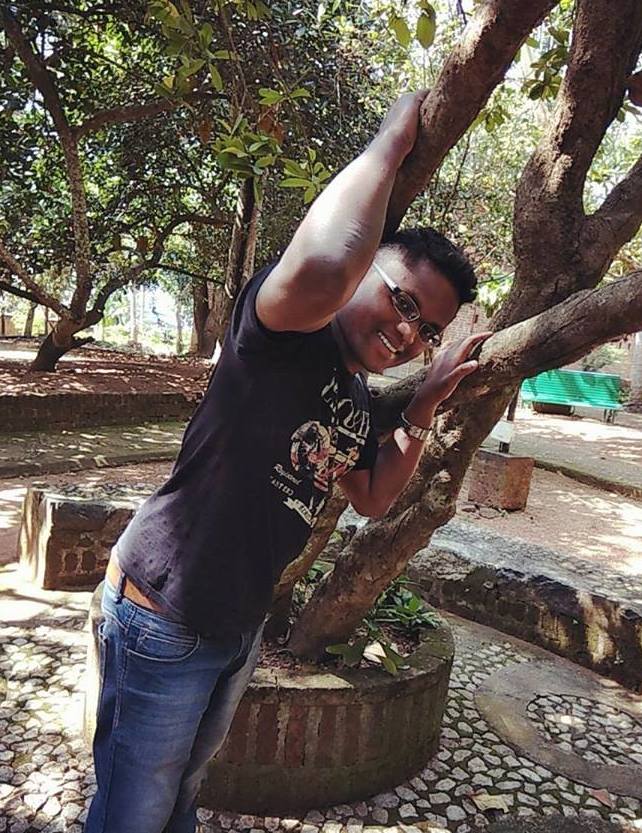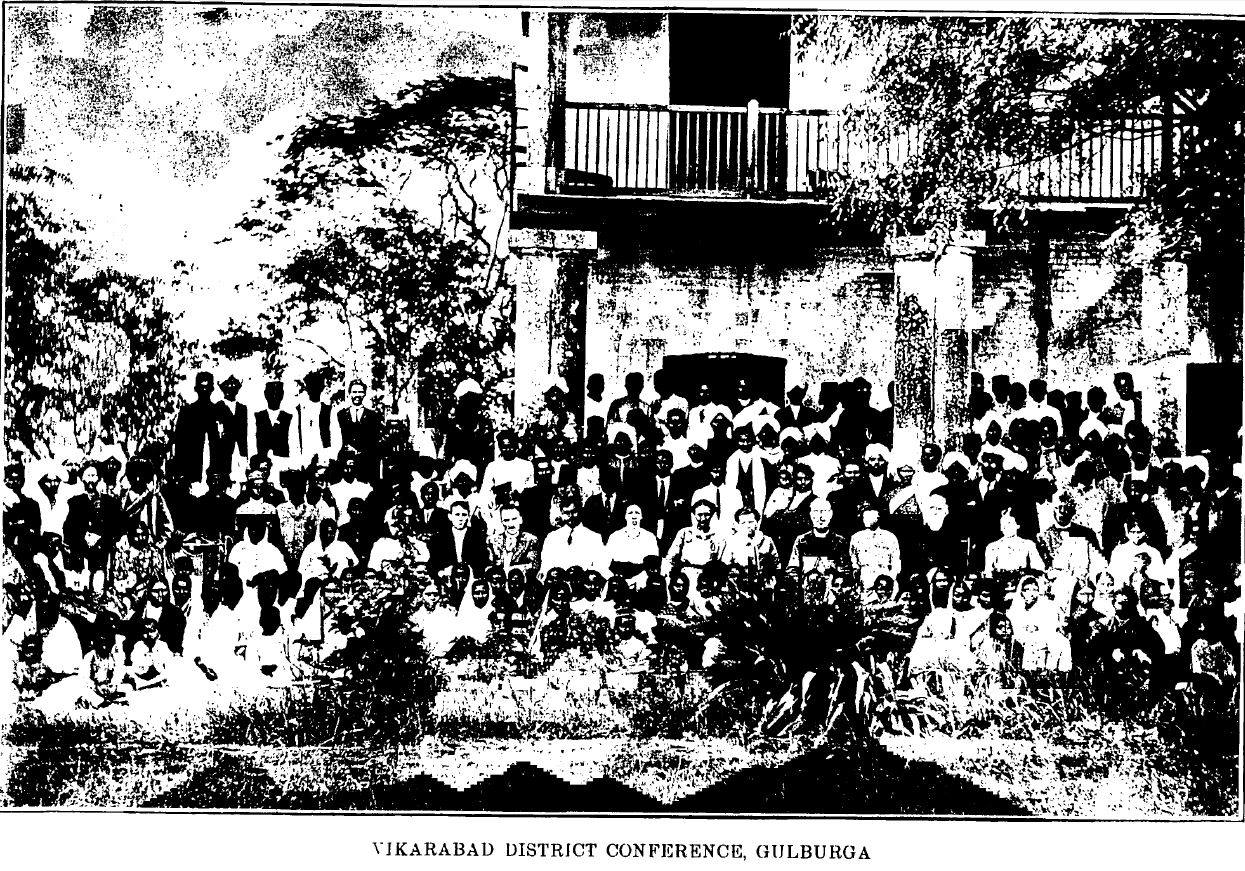John Kujur
 The pandemic COVID-19 has wreaked an unprecedented health crisis and subsequently led to socio-economic instability across the world. The impact of the pandemic is perceived to be pernicious for every person irrespective of caste, class, sex, religion, race etc. However, the burden of such crises is often shifted to the vulnerable sections of society. Moreover, under such circumstances, the underprivileged communities often become victims of political witch-hunts. In India, for instance, the hate campaign and blame directed against the migrant labourers and minority groups for the spread of contagious coronavirus is self-explanatory. Through such easy targeting of already vulnerable sections, the government conveniently obscures its failure and also apathy towards the issues of vulnerable communities.
The pandemic COVID-19 has wreaked an unprecedented health crisis and subsequently led to socio-economic instability across the world. The impact of the pandemic is perceived to be pernicious for every person irrespective of caste, class, sex, religion, race etc. However, the burden of such crises is often shifted to the vulnerable sections of society. Moreover, under such circumstances, the underprivileged communities often become victims of political witch-hunts. In India, for instance, the hate campaign and blame directed against the migrant labourers and minority groups for the spread of contagious coronavirus is self-explanatory. Through such easy targeting of already vulnerable sections, the government conveniently obscures its failure and also apathy towards the issues of vulnerable communities.
Since the inception of the pandemic, much has already been written globally on the impact of the disease on such vulnerable sections. In India too, epidemiologists, social scientists, and activists have been constantly articulating on the issue. However, we do not see much write-ups coming on Adivasis from the Bahujan perspective. This article is a small attempt towards contributing to the Bahujan discourse by specifically focusing on the impact of the pandemic on Adivasis of India in the wake of COVID-19. The article seeks to reflect how resource mobilisation for ‘national development’ has pushed them into the frontier of vulnerability by endangering their livelihoods.
Adivasis live a symbiotic life with nature. Therefore, their habitats are generally surrounded by sustainable environments which provide them with their everyday basic needs. In such settlements, the adverse effect of the lockdown is nearly absent. Unlike the urban populace who are compelled to live a constrained life in this situation, Adivasis continue to engage with their everyday socio-economic activities. However, such harmonious, independent and unaffected life among them at present is remembered as the past. The intrusion of capitalist market forces into their hinterlands for natural resources has caused great disruption in their lives and forced a sizable proportion of the adivasi populace to depend upon unsustainable livelihoods. Adivasis who were once known as self-reliant and self-sufficient communities, have now become dependants on others for their survival. Such a shift in their livelihood patterns not only made them vulnerable economically but has also inflicted a great health risk among them due to change in consumption patterns and low nutrition intake.
Adivasi health and COVID-19
At the time of writing, the Adivasi dominated regions (North-eastern states and Adivasis populated districts of central Indian states) are observed to be least infected by the contagious novel COVID-19. Possibly it is because of their spacious and remote nature of residential areas, and their self-sufficient life which helps them to be less mobile during such critical situation. However, it will be wrong to conclude that Adivasis are the most protected communities from any kind of health crisis as the current pandemic. In fact, Adivasis have been disproportionately bearing the brunt of the epidemic. The most unfortunate part is that their sufferings and loss are often overlooked and obscured by mainstream society and government. For instance, in the near past, the death of 300 Adivasi children in Malkangiri, Odisha, due to Japanese Encephalitis in 2016 never became a national concern. The issue was rather conveniently brushed aside by the government by blaming the victims themselves. The state government also deliberately tried to hide the actual death toll by reporting only 124 deaths officially to blot out its failure and apathy to tackle the health emergency in the Adivasi regions (TOI, 2016, Dec 5).
Various national-level statistics expose a grim picture of the severity of the health crisis among Adivasis and hence the state’s apathy to unriddle it. Vani Kant Borooah (2018) in his study on health outcomes in India shows that the mean age at death among Adivasis is lowest among all social groups, and while the age at death during the period 2004 to 2014 has increased for the household of all groups, it has declined for the former i.e. 45 to 43 years. Moreover, the Annual Report (2018-19) of Ministry of Tribal Affairs (MoTA) based on National Family Health Survey (NFHS)-4 data shows that the infant mortality rate, under-five mortality rate and the women of age 15-49 with anaemia among Adivasis i.e. 44.4%, 57.2% and 59.8% respectively are far worse compared to the national average of 40.7%, 49.7% and 53% respectively. These figures exemplify that every year thousands of Adivasis die prematurely due to various diseases.
These poor health indicators are attributed to the lack of health infrastructure in Adivasi regions and deterioration of their immunity. The Annual Report (2018-19) shows that as on 31st March 2018, there are shortfalls of 5935 health Sub-Centres, 1187 Primary Health Centres (PHCs) and 275 Community Health Centres (CHCs) in Adivasi dominated regions across the country. The report further reveals that there are shortfalls of 1902 Health Workers (female)/Auxiliary Nurse Midwife (ANM) at Sub Centres and PHCs; 1844 nursing staff at PHCs and CHCs; and 507 doctors at PHCs in the Adivasi areas.
Deterioration of their immunity is caused by the resource transfer from Adivasis to non-Adivasis, particularly to the dominant castes and privileged sections of the society through various development projects (Ekka, 2011). In many parts of the country, Adivasis consume around 400 species of wild foods which they avail directly from around the villages, fallow, forests, streams, bund of fields etc. (Ramnath, 2014). These species are enriched with specific nutritional values and vitamins that are usually not available in most of the cultivated crops and foods available in the market. Over time, availability and accessibility of these wild foods declined as reserve forests were created and the forest lands were diverted for mining and industrial activities which reduced nutrition intake among them.
Meena Radhakrishna (2009) in her study on Birhor Adivasis in Jharkhand ascertains that the curtailment of traditional rights of Adivasis over the forest and forest lands through the enactment of forest and wildlife protection policies which declared the shifting cultivation land as reserve land and also prohibited the hunting of wild animals; and this has reduced their traditional sources of nutrition and subsistence. Such expropriation of forest and natural resources by the state agencies has been witnessed across the country and is pervasive in the mining and industrial areas, which has not only pushed the Adivasis into hunger deaths but also weakened their immunity. A study by AIIMS on Adivasis of Attapady, Kerala ascertains that the average life expectancy of Adivasis in Attapady has declined from 70 years in 1975 to 66 years in 2002 and further to 59 years in 2010, whereas the average life expectancy for Kerala as a whole has increased from 62 years in 1970-75 to 74.9 years in 2011. The utmost reason for this is the decline in forest coverage due to mining activities, and the consequent change in their livelihood patterns and food habits (Sreedevi, 2017).
From the above analysis of health crisis in the Adivasi populated regions one can deduce that the lack of health infrastructure and deterioration of immunity together has exacerbated the risk of morbidity and mortality among them. In the current situation, although the risk of contagion of coronavirus is relatively less in the Adivasi populated regions, the urban-dependent Adivasis who lost land and forest over time are at an increased risk of being infected with COVID-19.
Economy of Adivasis and COVID-19
The economic crisis imposed by COVID-19 generally has negligible impact on a self-contained and self-sufficient economy. The Adivasi economy which is comprehended as self-contained and self-sufficient, is currently undergoing a transition towards the market economy, and therefore, the impact of the nation-wide lockdown is reflected in their economy as well.
During the spring and summer seasons, the Adivasis mostly engage in off-farm activities. In these seasons, the forest blossoms with rich forest produce and they heavily depend upon it for their livelihoods. They collect minor forest products (MFPs) such as mahua flower, chironji, sal seed, kendu leaves etc. Of these, they store some amount for future consumption and the remainder they sell in the market. These forest products provide them with monetary support for their survival during off-farm seasons and also finance their Kharif cultivation. With this money, they generally replace old plough, bullocks, and other agricultural tools and equipment for better farming.
The nation-wide lockdown has halted their earnings from MFPs and thus the preparation for Kharif cultivation. Although government schemes and mechanisms have been framed to procure MFPs from them at minimum support price (MSP), these are hardly realised (Moudgil, 2020). The absence of markets due to lockdown and lack of institutional outreach thus may deepen the monopoly of the local traders, and the urgent requirement for money for survival and preparation for Kharif farming together may lead to the distress sale of their MFPs and prevent them from earning essential income.
Secondly, the remittances from inter-state Adivasi migrants which supplement their livelihoods have also slumped. Adivasis are often found to be seasonal migrants, migrating both to urban and rural areas for their sustenance. The history of Adivasi migration as a cheap labourer can be traced back to the mid-nineteenth century. Due to depeasantisation in the colonial period, Adivasis, particularly from the Chota Nagpur plateau, migrated permanently to the tea gardens of Assam and West Bengal. However, following independence, the perpetual dispossession first inflicted by the Nehruvian Regime and the later the Neoliberal Regime, have wreaked havoc on Adivasis by shrinking their livelihood sources. As a result, Adivasis have been pushed to migrate often as construction and menial workers in the metropolises and agricultural labourers in different parts of India.
According to the 68th round of Employment and Unemployment Survey of National Sample Survey Office (NSSO), 30 per cent of the Adivasi households are landless and 45 per cent own just 0.01-1 hectare of land (Figure 1), on average. Moreover, nearly 46 per cent do not cultivate any land, and of the cultivating households, about 34 per cent cultivate just 0.01-1 hectare of land (Figure 2) each. Furthermore, as per the Periodic Labour Force Survey (2017-18) of NSSO, while 55 per cent of the Adivasi households’ means of livelihood is self-employment either in agriculture or non-agriculture sector, about 26 per cent earn their major income from daily wage labour (Figure 3). Majority of the income earners belonging to self-employed household category i.e. 75 per cent are skilled agricultural, forestry and fishery workers; while about 11 per cent are involved in elementary occupations (Figure 4). These statistics evince the severity of occupational vulnerability among the Adivasis due to preponderance of landlessness and smallholdings, the upshot of de-peasantisation by dispossession. At this current juncture, the COVID-19 lockdown has aggravated this livelihood insecurity among them and increased the risk of being pushed into abject poverty.
 Source: Employment and Unemployment Survey, 68th round (2011-12) of NSSO.
Source: Employment and Unemployment Survey, 68th round (2011-12) of NSSO.
 Source: Employment and Unemployment Survey, 68th round (2011-12) of NSSO.
Source: Employment and Unemployment Survey, 68th round (2011-12) of NSSO.
 Source:Periodic Labour Force Survey (2017-18) of NSSO
Source:Periodic Labour Force Survey (2017-18) of NSSO
 Source:Periodic Labour Force Survey (2017-18) of NSSO
Source:Periodic Labour Force Survey (2017-18) of NSSO
Apart from de-peasantisation by dispossession, the education system prevailing in Adivasi populated regions is also to some extent responsible for the emergence of a labour class among Adivasis. The dominant pedagogical paradigm, which aims at reproducing the dominant socio-cultural value system, has been systematically de-skilling and wiping out the aboriginal skills and practices of sustainable livelihood among the Adivasi youths and thus contributing towards occupational vulnerability among them. It seems that the state only intends to increase the statistics of the literate without enabling them to get a decent and dignified job. For instance, out of an initial enrolment of 100 adivasi students, only 61 finish senior secondary school, the lowest among other social groups (Radhakrishnan, 2019). The Gross Enrolment Ratio (GER) among Adivasis between the age group of 18-23 in higher education, according to the All India Survey on Higher Education Reports (2018-19), MHRD, is only 17.2% which is much lower than that of any other social groups. These educational statistics manifest the failure of the education system in the Adivasi regions. Moreover, the on-going education drive in Adivasi regions appears to be a distracting factor for the young generation, moving them away from nature and sustainable livelihoods so that the struggle for land rights and rights over forest can be weakened to help the corporate bigwigs to intrude into the Adivasi land.
Thus, poor educational outcomes among them shows that the education system has failed to bring any positive consequences in their livelihood, it has rather worsened their occupational status by discouraging them from depending upon sustainable livelihood. Therefore, it will not be wrong to conclude that the literacy-driven education system in Adivasi regions has also contributed towards the economic instability of Adivasis during this unprecedented COVID-19 lockdown.
Conclusion
The health and economic crises among Adivasis seem to be the product of state’s exclusionary developmental policies which disregarded their welfare and interest. The low immunity due to the decline in access to nutrition sources and change in livelihood patterns have turned them into one of the most vulnerable communities under this period of highly contagious pandemic and nationwide lockdown. Although, its impact on their health is less since their interaction with the outside or urban population is relatively less, it has put them on the brink of economic vulnerability. The nationwide lockdown has not only pushed them from their immediate work but also has inhibited them from finding a market for their forest products. Thus, it has put them into the risk of being pushed into indigence. As is well known, most of the Adivasi households survive through PDS; in such a situation, the failure in delivering PDS in Adivasi regions may escalate hunger deaths among them.
Based on the above-discussed issues, I propose the following policy measures to improve Adivasi life.
- Besides the free distribution of rice and wheat, the government should ensure nutrition intake among them.
- The state mechanisms must ensure fair price for the MFPs which may contribute to strengthening economic conditions of millions of Adivasis in this unprecedented economic crisis. The government should also provide fair unemployment allowances.
- The absence of market for agriculture products and shutdown of construction industries have left the small and marginal farmers without capital for Kharif cultivation. Therefore, the government should finance the agriculture activities, otherwise, the adverse effect of COVID-19 on both people and the agriculture sector will perpetuate for a longer time.
- The rigorous implementation of MGNREGA is a must at this situation to counter economic deprivation.
The government may also consider the following long-term measures to bring sustainability in their socio-economic life and protect them from any kind of shock in future.
- Enable them to be self-employed through providing skill development and training, and promoting poultry farming, aquaculture, piggery, fungiculture and dairy farming etc.
- Prohibit land transfer from Adivasis to non-Adivasis and enhance the process of land allocation through the implementation of Forest Rights Act, 2006.
- Empower gram sabhas to control and regulate the developmental and economic activities in the Adivasi regions which will protect them from any kind of vulnerability.
- Recognise the landless labour households among the Adivasis and rehabilitate them.
- Boost health infrastructure and ensure it’s accessible to every citizen.
I gratefully acknowledge the support of Pankaj Naik (Faculty at Vikram Dev College, Jeypur, Odisha) and Kashif Mansoor (Research scholar at CDS) who helped to shape my arguments.
~
References
All India Survey on Higher Education Reports (2018-19), New Delhi: Ministry of Human Resource Development. Retrieved from http://aishe.nic.in/aishe/viewDocument.action?documentId=262 Accessed on 24.4.2020.
Ekka, Alex (2011): Status of Adivasis/Indigenous Peoples Land Seris-4: Jharkhand, Delhi: Aakar Books.
Moudgil, Manu (2020): “Corona Virus Lockdown: Tribal People Restless Over Sale of Minor Forest Produce,” The Wire, Retrieved from https://thewire.in/government/coronavirus-lockdown-tribals-forest-produce Accessed on 24.4.2020.
Radhakrishna, Meena (2009): “Starvation among Primitive Tribal Groups,” Economic and Political Weekly, Vol 44, No 15, pp 13-16.
Radhakrishnan, Vignesh (2019): “What is the Dropout Rate among School Children in India?” The Hindu, Retrieved from https://www.thehindu.com/education/percentage-of-school-dropouts/article25909306.ece Accessed on 25.4.2020.
Ramnath, Madhu (2014): “The Food Bill, Wild Foods and the Adivasi People,” Yojana, Vol 58, pp 27-19.
Sreedevi RS (2017): “Kerala’s Progress Has Not Reached Its Tribal Belt. Here’s Why,” Retrieved from https://everylifecounts.ndtv.com/keralas-progress-has-not-reached-its-tribal-belts-heres-why-12213. Accessed on 27.03.2020.
Times of India (2016, Dec 5): Students’ rally against deaths of Adivasi children in Odisha, Retrieved from https://timesofindia.indiatimes.com/city/hyderabad/Students-rally-against-deaths-of-Adivasi-children-in-Odisha/articleshow/55801781.cms Accessed on 13.4.2020.
~~~
John Kujur is doctoral scholar at Centre for Development Studies, Trivandrum, Kerala. He is currently researching on land alienation and tribal labour in India. He can be contacted at johnkcds@gmail.com









